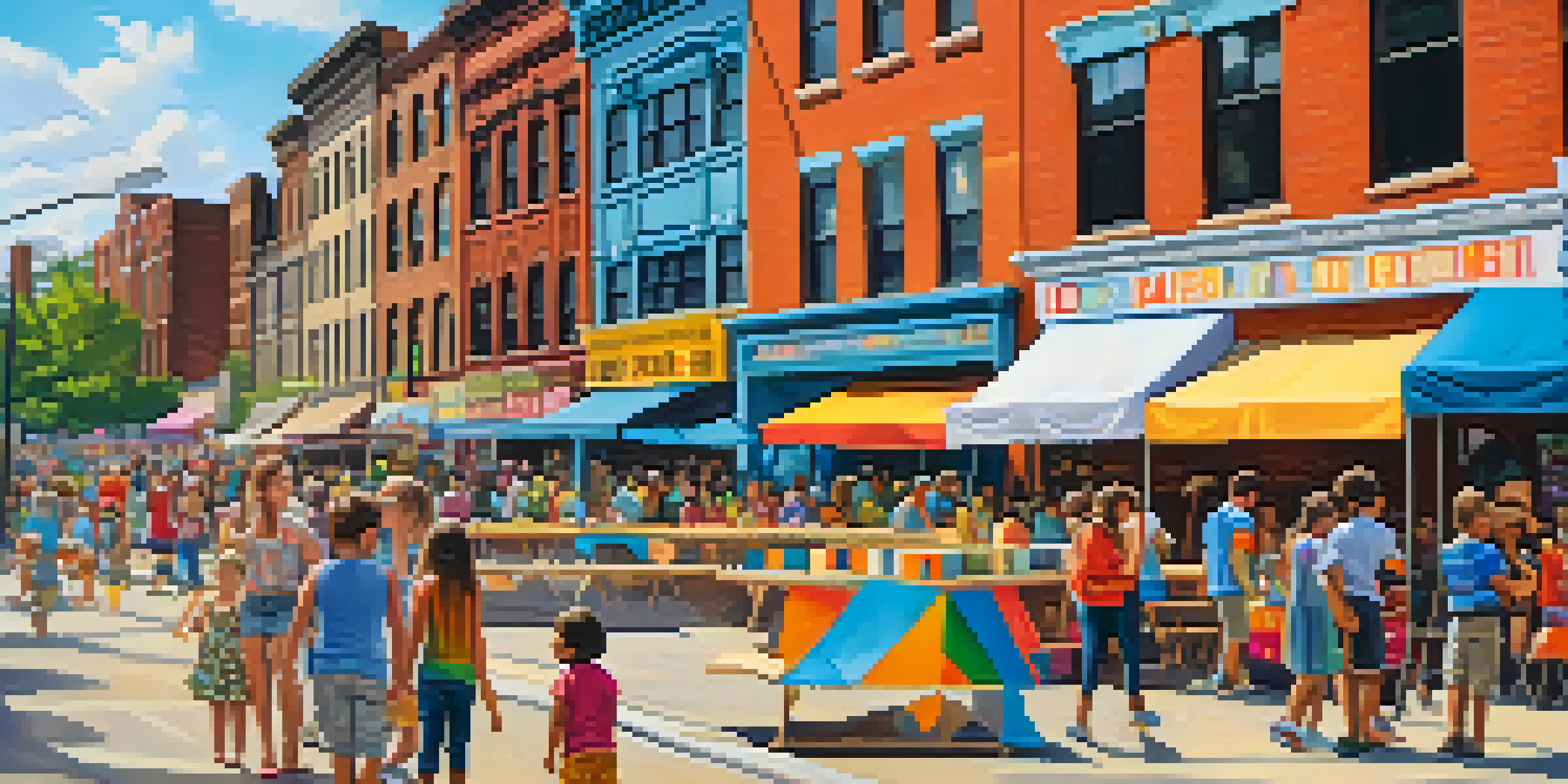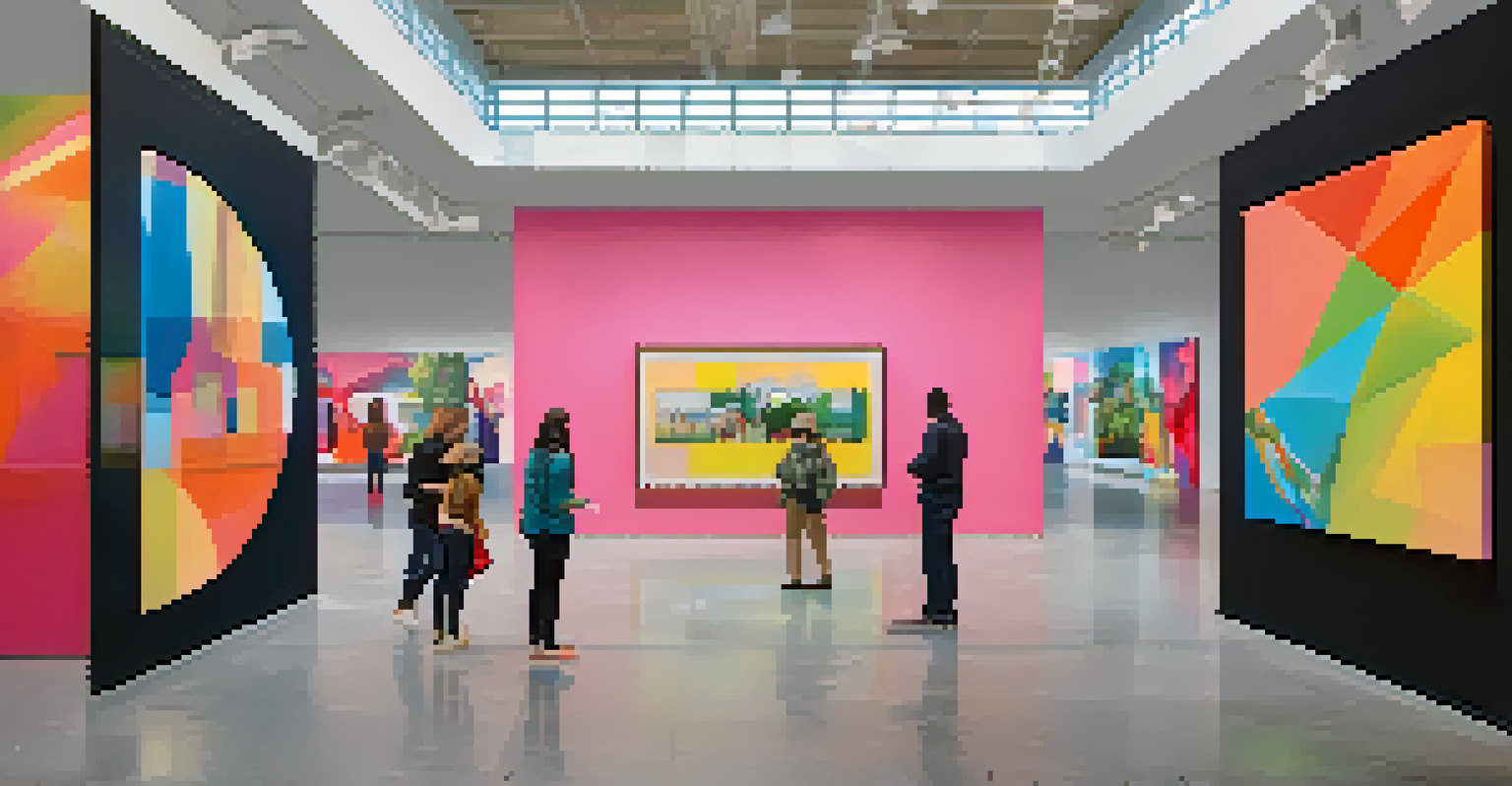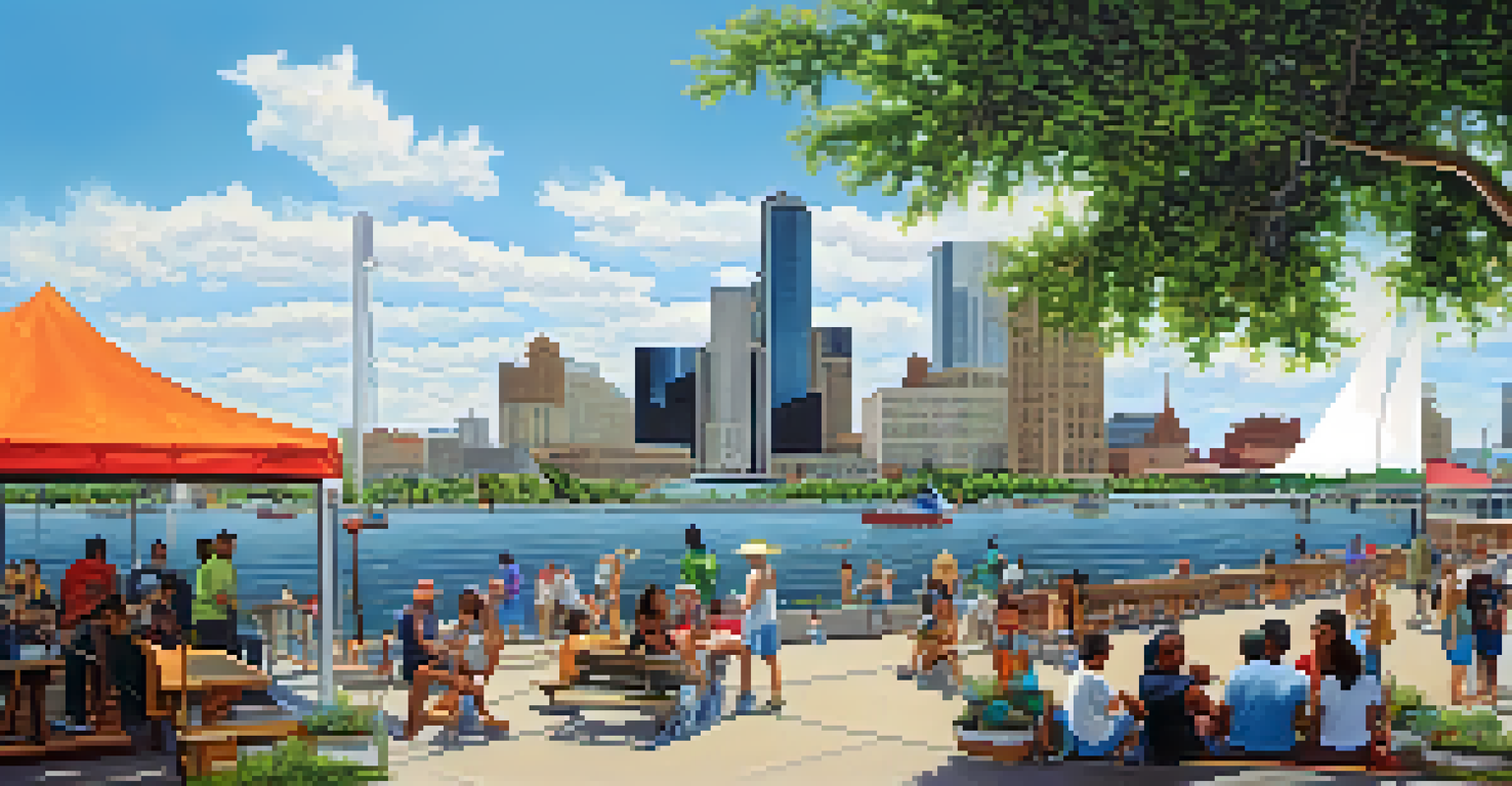Artistic Evolution: Detroit's Museums and Their Community Impact

A Brief History of Detroit's Artistic Landscape
Detroit's artistic evolution is deeply rooted in its rich history, weaving together the stories of its diverse communities. From the early days of the Detroit Institute of Arts, which opened in 1885, to the emergence of contemporary art spaces, the city has continually nurtured a vibrant cultural scene. Over the years, museums in Detroit have served not just as showcases of art but as reflections of the city's resilience and creativity.
Art enables us to find ourselves and lose ourselves at the same time.
As industries boomed and busts occurred, artists responded with powerful works that depicted the struggles and triumphs of urban life. The city's artistic expression has often mirrored the socio-economic landscape, making its museums vital in preserving these narratives. Each exhibit tells a story, inviting visitors to connect with Detroit's past while engaging with its present.
Today, Detroit's museums have evolved to incorporate interactive exhibits and community-driven programs, making art accessible to everyone. This evolution not only enhances the experience for visitors but also fosters a sense of ownership and pride among local communities. As a result, Detroit's artistic landscape continues to thrive, adapting to the needs and aspirations of its people.
Museums as Community Hubs: Engagement and Education
Detroit's museums have transformed into community hubs, offering educational programs and events that engage residents of all ages. These institutions recognize the importance of accessibility, striving to create spaces where everyone can learn about art, history, and culture. Through workshops, lectures, and family-friendly activities, museums bridge the gap between art and community involvement.

For instance, the Detroit Historical Museum often collaborates with local schools to integrate art into their curricula, fostering creativity among students. By providing resources and mentorship, these museums help cultivate the next generation of artists and thinkers. This hands-on approach fosters a sense of belonging and encourages young people to explore their creativity.
Museums as Community Centers
Detroit's museums have transformed into community hubs, offering engaging educational programs that connect art with local residents.
Moreover, partnerships with local organizations enhance the impact of these museums, allowing them to reach diverse audiences. Events such as neighborhood art walks and cultural festivals invite community members to participate actively, turning the museums into spaces of celebration and connection. This collaborative spirit not only enriches the community but also strengthens the museums' relevance in the lives of residents.
The Role of Local Artists in Museum Exhibitions
Local artists play a pivotal role in shaping the exhibitions at Detroit's museums, infusing them with authenticity and relevance. By showcasing the work of homegrown talent, museums not only highlight the city's creative prowess but also create a platform for artists to gain visibility. This synergy between artists and institutions fosters a sense of pride within the community.
Creativity takes courage.
Exhibitions featuring local artists often explore themes that resonate deeply with Detroit's residents, from urban landscapes to personal narratives. For example, the Museum of Contemporary Art Detroit (MOCAD) frequently highlights the works of emerging artists, providing them with a space to express their unique perspectives. This focus on local talent allows visitors to connect with the art on a personal level.
Additionally, these exhibitions often lead to conversations about the challenges and triumphs faced by the artists and their communities. By engaging with local artists, museums create a dialogue that extends beyond the gallery walls, prompting discussions about cultural identity and social issues. This relationship not only enriches the museum experience but also strengthens the bond between art and community.
Impact of Art on Detroit's Urban Revitalization
Art has proven to be a powerful catalyst for urban revitalization in Detroit, breathing new life into neighborhoods that have faced challenges. Museums, alongside local artists and community organizations, have spearheaded initiatives that transform public spaces into vibrant art installations. This transformation not only beautifies the city but also attracts visitors and promotes economic growth.
Take the Detroit Riverwalk, for instance, which has been revitalized through art installations and community events. The presence of museums in the area has encouraged local businesses to thrive, creating a ripple effect that benefits the entire community. As art enriches the urban landscape, it fosters a sense of pride and ownership among residents, encouraging them to invest in their surroundings.
Local Artists Drive Exhibitions
Exhibitions featuring local artists infuse authenticity into Detroit's museums, fostering pride and meaningful connections with the community.
Moreover, the integration of art into urban planning promotes inclusivity and creativity, making Detroit a more inviting place to live and work. The collaboration between museums and local governments highlights the importance of arts in shaping public policy. As a result, art is no longer seen as a luxury but as a vital component of community development.
Cultural Festivals: Celebrating Diversity Through Art
Cultural festivals in Detroit celebrate the city's rich diversity, with museums playing a central role in these events. Festivals such as the Detroit Jazz Festival and the Detroit Festival of the Arts bring together artists, musicians, and performers from various backgrounds, showcasing the city's cultural tapestry. These events not only entertain but also educate attendees about the significance of different art forms and traditions.
Museums often host workshops and performances during these festivals, allowing community members to engage with various art forms firsthand. By providing a platform for artists to share their work, museums contribute to the cultural dialogue that defines Detroit. This celebration of diversity fosters understanding and appreciation among residents, encouraging them to explore different perspectives.
Furthermore, these festivals attract visitors from outside the city, promoting tourism and economic growth. The unique blend of art, culture, and community engagement creates a vibrant atmosphere that highlights Detroit's creativity. As museums continue to support and promote these events, they enhance their role as cultural stewards, ensuring that the city's artistic evolution is celebrated and shared.
Digital Innovations: Expanding Museum Accessibility
In an increasingly digital world, Detroit's museums are embracing technology to expand accessibility and reach broader audiences. Virtual tours, online exhibits, and interactive apps allow people to engage with art and history from the comfort of their own homes. This shift not only accommodates those who may not be able to visit in person but also attracts a younger, tech-savvy audience.
The integration of digital innovations has allowed museums to experiment with new formats, enhancing the visitor experience in novel ways. For instance, augmented reality features in exhibits can bring artworks to life, providing a deeper understanding of the artist's intent. This technology-driven approach creates an engaging learning experience that resonates with a diverse range of visitors.
Art Fuels Urban Revitalization
Art initiatives spearheaded by museums contribute significantly to Detroit's urban revitalization, enhancing neighborhoods and promoting economic growth.
Moreover, by utilizing social media platforms, museums can share their collections and stories with a global audience. This digital outreach fosters a sense of community beyond geographical boundaries, allowing art lovers from around the world to connect with Detroit's vibrant cultural scene. As museums continue to innovate, they reaffirm their commitment to inclusivity and accessibility.
The Future of Detroit's Museums and Community Impact
Looking ahead, the future of Detroit's museums is bright, with an ongoing commitment to community impact and artistic evolution. As they continue to adapt to the changing needs of the city, museums will play a crucial role in fostering creativity, inclusivity, and dialogue among residents. The partnerships formed with local artists, schools, and organizations will only strengthen their relevance in the community.
Moreover, the focus on sustainability and social justice will guide museums in their programming and outreach efforts. By addressing contemporary issues through art and education, these institutions can empower residents to engage with their surroundings and advocate for positive change. This commitment to social responsibility will further solidify the museums' place as vital resources within the community.

As Detroit transforms, so too will its museums, reflecting the dynamic spirit of the city. With continued support and collaboration, these institutions will not only preserve the past but also inspire future generations to contribute to the ongoing artistic narrative. The journey of artistic evolution in Detroit is far from over, and the community's involvement remains essential to this vibrant story.